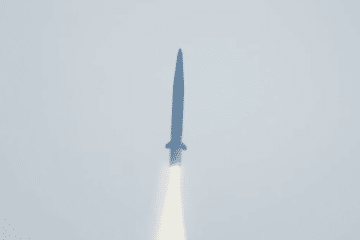The new CWIS uses an actively scanned electronic array (AESA) radar. “The AESA radar is the one that will equip the KF-21. The system actually has two separate AESA radar systems,” explain a Hanwha representative during an interview with Naval News. The radar at the back keeps a lookout for incoming threats. The radar above the barrel at the front is the fire control radar.
“This AESA radar is highly advanced. By utilizing it, the system can track and intercept small supersonic targets that are travelling at upto mach 3.”
Hanwha Systems representative
The electro optical targeting system (EOTS) is another new feature. “We completed development of EOTS in 2017,” explained the representative. He claimed that the new EOTS will allow for even greater precision. “Previous CWIS systems did use the EOTS. However, they were only used to confirm hits, not as a fire control sensor. In the new CWIS, the EOTS augments the AESA radar in tracking and destroying incoming missiles.”
The new design also uses an advanced “ballistic calculator (BC)”. “The improved BC allows us to fire with greater precision, making the system much more effective than previous iterations.”

The most notable aspect of the new design is stealth. The system features many sleek angled surfaces; most of the gun’s barrel has been covered so as to minimize radar cross section.
“We built in stealth to help reduce the radar cross section of whichever ROKN ship the system is deployed on. If we win the contract, mass production is expected to begin around 2025.”
Hanwha Systems representative






